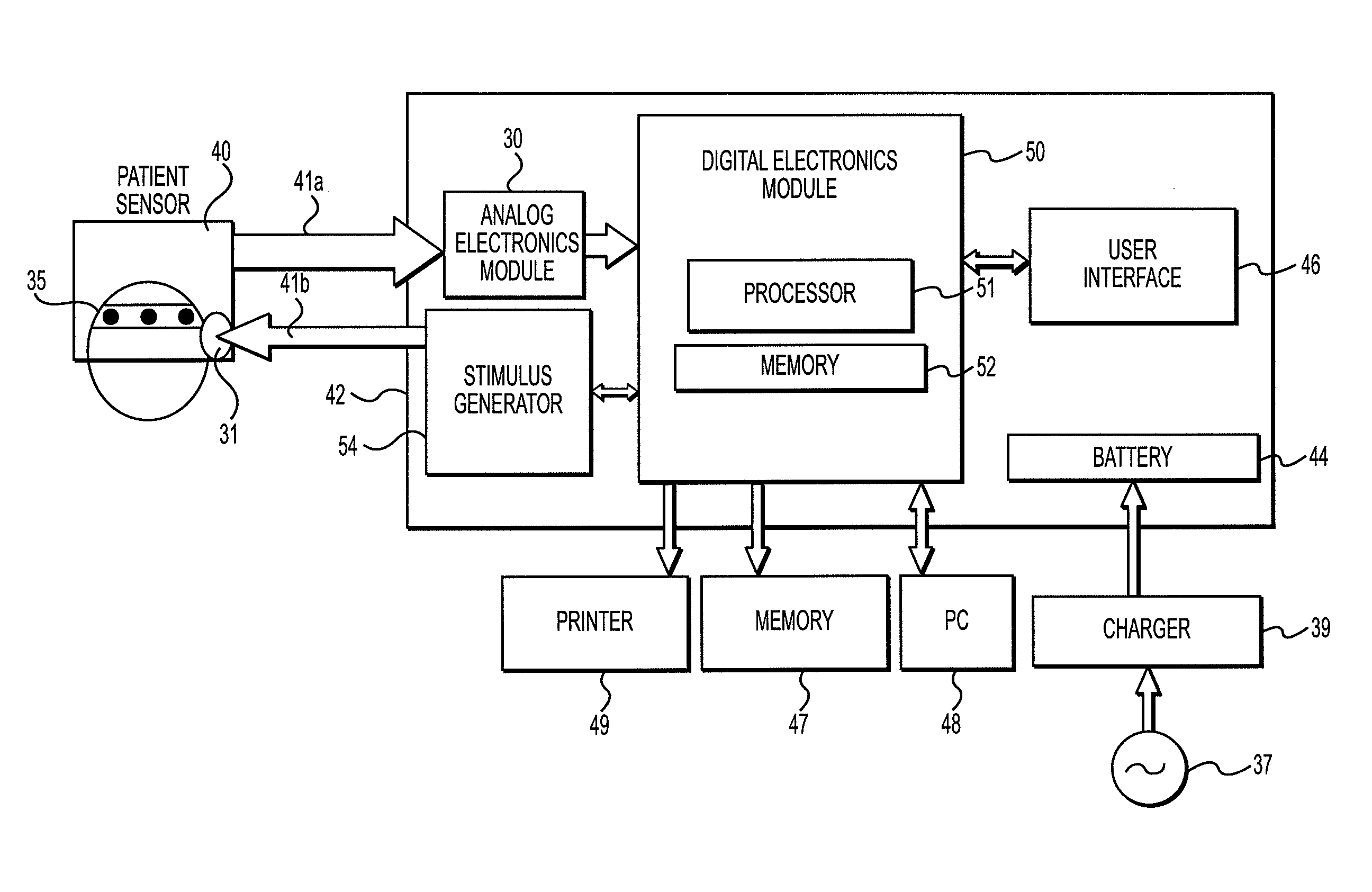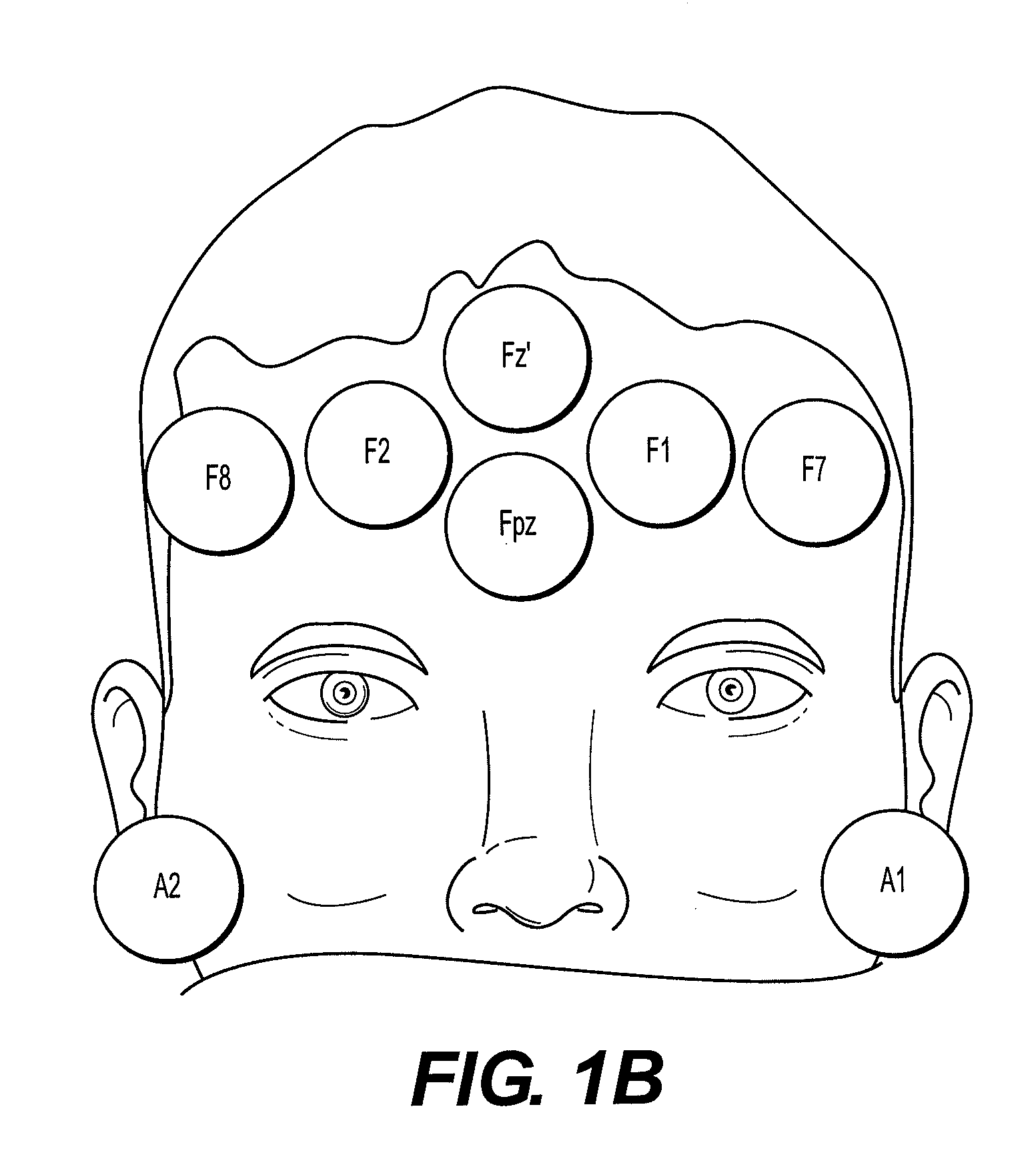Method and device for point-of-care neuro-assessment and treatment guidance
a neuro-assessment and treatment guidance technology, applied can solve the problems of lack of sophisticated tools in the field of neuro-assessment objectively, lack of information about brain function in clinical laboratories, and lack of ability of clinical laboratories to assess brain function or pathology
- Summary
- Abstract
- Description
- Claims
- Application Information
AI Technical Summary
Problems solved by technology
Method used
Image
Examples
Embodiment Construction
[0019]Reference will now be made in detail to embodiments consistent with the present invention, examples of which are illustrated in the accompanying drawings. Wherever possible, the same reference numbers will be used throughout the drawings to refer to the same or like parts.
[0020]In an exemplary embodiment, data corresponding to brain electrical activity is used to detect acute neurological injury or disease in patients. The brain electrical signals are measured and analyzed at the point-of-care using a portable neuro-triage device developed using Bx™ technology, so as to provide an immediate evaluation of the subject's neurological condition. In accordance with an exemplary embodiment of the Bx™ technology, a subject's brain electrical activity is recorded using a varying number of electrodes located at standardized positions on the scalp and forehead, and the subject's brain electrical signals are assessed with reference to one or more databases. For example, collected normati...
PUM
 Login to View More
Login to View More Abstract
Description
Claims
Application Information
 Login to View More
Login to View More - R&D
- Intellectual Property
- Life Sciences
- Materials
- Tech Scout
- Unparalleled Data Quality
- Higher Quality Content
- 60% Fewer Hallucinations
Browse by: Latest US Patents, China's latest patents, Technical Efficacy Thesaurus, Application Domain, Technology Topic, Popular Technical Reports.
© 2025 PatSnap. All rights reserved.Legal|Privacy policy|Modern Slavery Act Transparency Statement|Sitemap|About US| Contact US: help@patsnap.com



